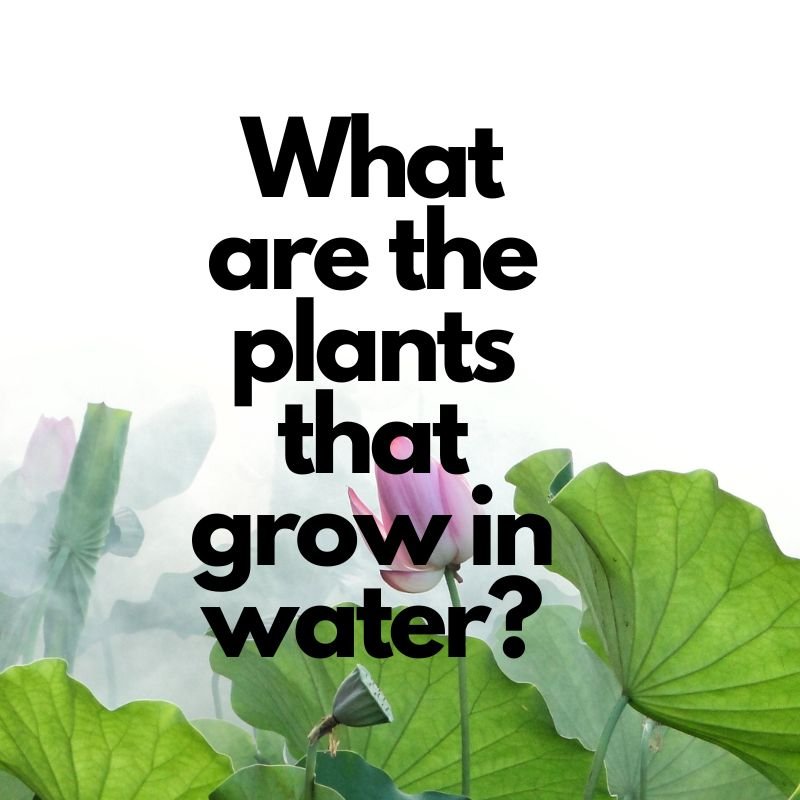What are the plants that grow in water?
We all know that plants need water to grow, but did you know that there are actually plants that grow entirely in water? These aquatic plants are adapted to live in a variety of different aquatic habitats, from shallow ponds to deep lakes. In this blog post, we will take a look at some of the different types of plants that grow in water. We will also discuss the adaptations that allow these plants to thrive in their aquatic environments.

Different types of plants that grow in water
There are many types of plants that can grow in water, either partially or fully submerged. Some common aquatic plants include water lilies, Lotus, Aquatic mosses, Water hyacinths, and Water lettuce.
Water lilies are perhaps the most iconic of aquatic plants. They typically have large, round leaves that float on the surface of the water and beautiful flowers that emerge from the center of the plant. Lotus is similar to water lilies, but their leaves tend to be more elongated and they often have smaller flowers.
Aquatic mosses are small, low-growing plants that often form dense mats on the surface of the water or on submerged rocks or logs. A water hyacinth is a floating plant with long, slender leaves and showy purple flowers. Water lettuce is another floating plant with ruffled leaves that resemble those of a head of lettuce.
How do these plants benefit from growing in water?
Some plants benefit from growing in water because the water helps to support the plant. The roots of the plant can also absorb nutrients from the water that they otherwise would not be able to get from the soil. Additionally, growing in water can help to keep the plant cooler, which is beneficial in hot climates.
Are there any disadvantages to growing plants in water?
There are a few disadvantages to growing plants in water. First, it can be difficult to control the amount of water that the plant receives. Second, if the water is not clean, it can introduce harmful chemicals and pollutants into the plant. Finally, plants grown in water can be more susceptible to disease and pests.
How can I start growing plants in water?
If you’re interested in growing plants in water, there are a few things you need to know. First, it’s important to choose the right plants for this type of growth. Some plants are better suited for soil, while others do better in water. Second, you need to make sure your plant has enough light.
Water can block out sunlight, so you’ll need to provide an artificial light source if you want your plant to thrive.
Third, be sure to change the water regularly. Stagnant water can lead to problems with mold and mildew, so it’s important to keep the water fresh. fourth, give your plant the nutrients it needs. Just like plants grown in soil, aquatic plants need access to essential nutrients like nitrogen and phosphorus. You can provide these nutrients through a liquid fertilizer or by adding them directly to the water.
Finally, don’t forget about pests! Aquatic plants can be susceptible to pests like aphids and mealybugs. Be sure to check your plants regularly for signs of pests and take action if necessary.
Conclusion
Aquatic plants are an important part of the ecosystem and play a vital role in the water cycle. There are many different types of aquatic plants, each with its own unique set of characteristics. Some common aquatic plants include lotus, water lilies, cattails, and rushes. Aquatic plants can be found in both freshwater and saltwater habitats all over the world.


